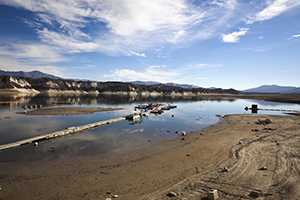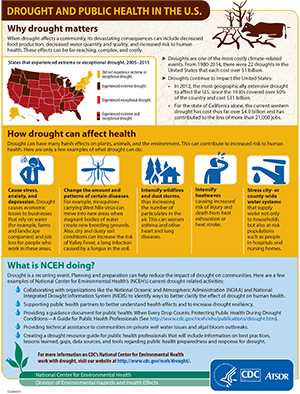Drought

When drought affects a community, it can bring devastating consequences: increased risk to human health, decreased water quality, and decreased food production. These effects can be far-reaching, complex, and costly.
Drought is a recurring event. Planning and preparation can help reduce the impact of drought on communities. Here are a few examples of our current activities to help communities address drought:
- Collaborating with organizations like the National Oceanic and Atmospheric Administration (NOAA) to identify variables within their National Integrated Drought Information System (NIDIS). We use this information to better understand the effects of drought on the environment and people in their communities.
- Supporting public health partners to better understand the health impacts from drought and improve drought resiliency.
- Providing technical assistance to communities where drought may impact private well water.
- Creating a resource guide for public health professionals about determining the health consequences of drought. The document will provide guidance on how to measure vulnerability and health impact of drought. It also describes where to find the needed data, and how best to analyze them.

Learn more about drought from our infographic [PDF – 1.69 MB].
For more information on CDC’s work with drought, visit our website here: https://www.cdc.gov/nceh/drought/.
- Page last reviewed: August 22, 2017
- Page last updated: August 22, 2017
- Content source:


 ShareCompartir
ShareCompartir